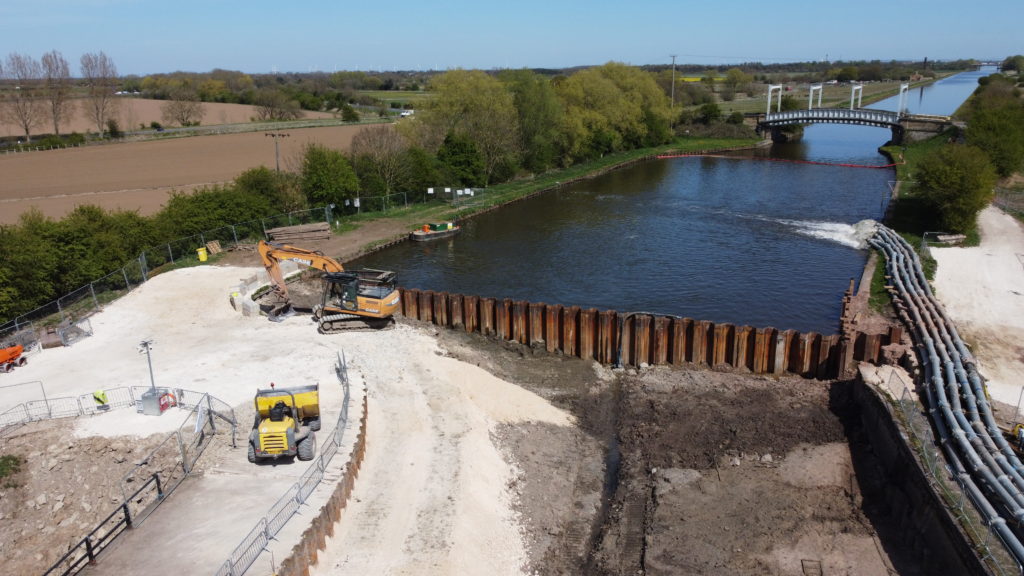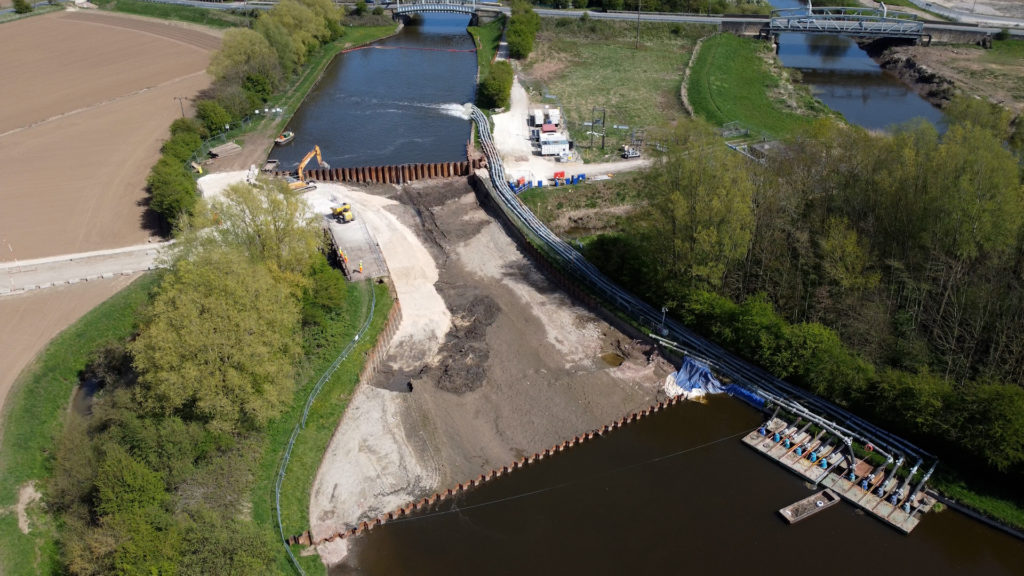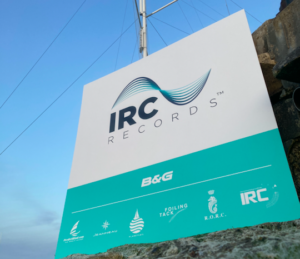Three-million-pound repairs needed for Aire & Calder Navigation
 DCIM100MEDIADJI_0092.JPG
DCIM100MEDIADJI_0092.JPG
A major project to repair a breach on the Aire & Calder Navigation is likely to cost in the region of £3m, says the Canal & River Trust.
The trust, which looks after the Aire & Calder Navigation as part of its 2,000-mile network, is starting work on the permanent repairs following detailed inspections and surveying by its team of engineers.
The site has been closed to boats and towpath users since 20 December when the breach occurred at Newbridge between Southfield Reservoir and Goole following high rainfall. A multi-agency response, involving a helicopter placing 240 one-tonne bags of stone around the breach hole, helped to manage water flow which swept away a 20-metre section of the embankment.
The trust is working with contractors Kier and Arcadis on a permanent and complex repair programme, with construction due to begin imminently. It is anticipated that the repairs will be completed by mid-August.
“One of the biggest challenges we face looking after our historic waterways is climate change and the increase of extreme weather events this brings,” says Sean McGinley, director Yorkshire & North East. “Last year, our region was badly hit, with another major repair programme to Figure of Three Locks on the Calder & Hebble Navigation, costing £3.4m.
“Following the installation of dams at the breach location, our engineers have been able to carry out a series of detailed site investigations at the drained site. A design solution has now been confirmed which is going to cost our charity approximately £3m.
“Repairs are becoming increasingly more expensive and complex in their design, to help robustly withstand future flood events, while working under the extra restrictions and challenges created by coronavirus. We apologise for the disruption the breach is causing to our waterway and towpath users and we are doing everything possible to get the navigation and towpath back open as soon as possible.”
The Aire & Calder Navigation emerged on the back of an Act of Parliament dating from the late 17th century which allowed short canal cuts to be added to the rivers Aire and Calder. Work was completed by 1704, making the Aire navigable between Knottingley and Leeds, and the Calder from Wakefield to its junction with the Aire at Castleford.
The Aire & Calder Navigation grew over the decades. Steam tugs were introduced in 1831. In the 1860s, compartment boats were introduced, later called Tom Puddings, from which coal was unloaded into ships by large hydraulic hoists. Today, the Aire & Calder Navigation, 34 miles long, is still a freight route, with goods carried from the Humber ports.











